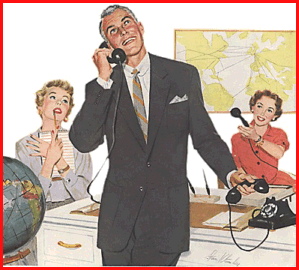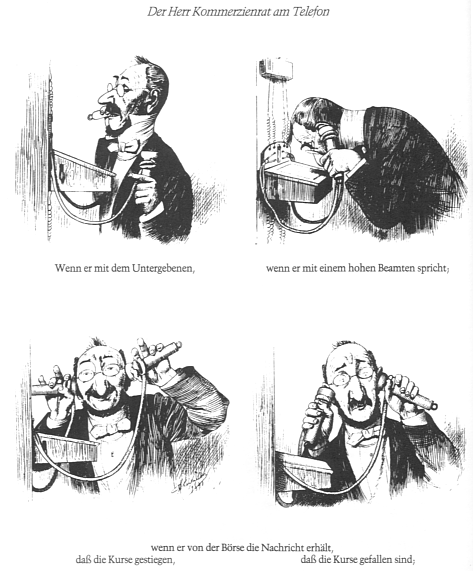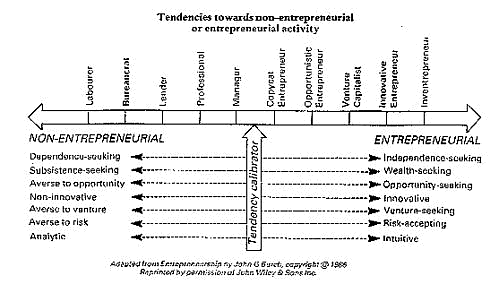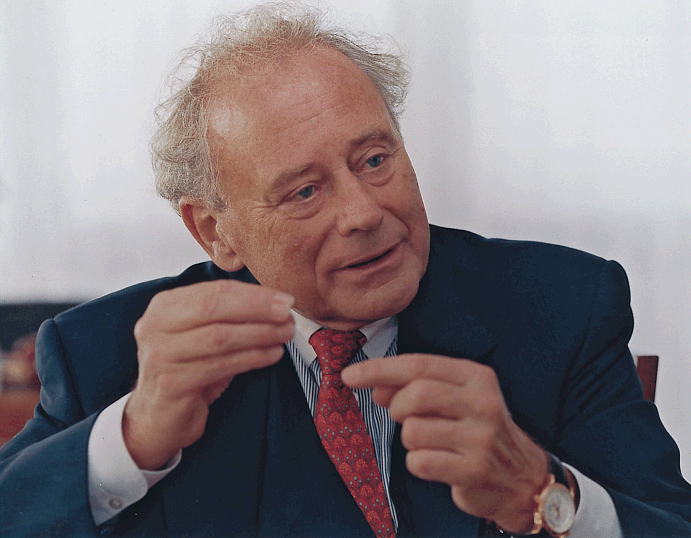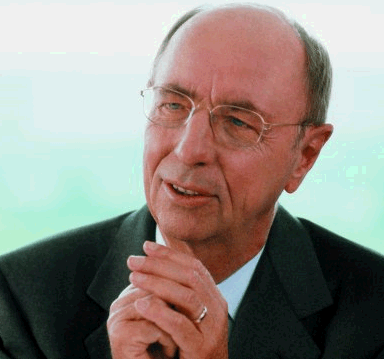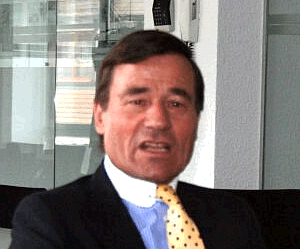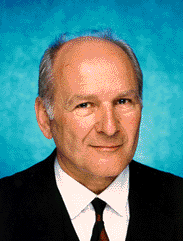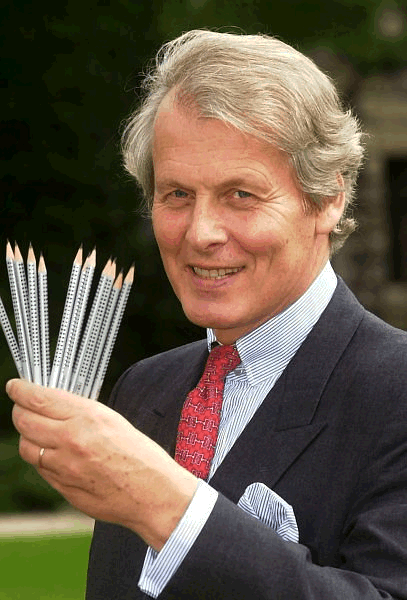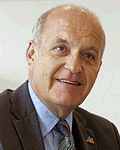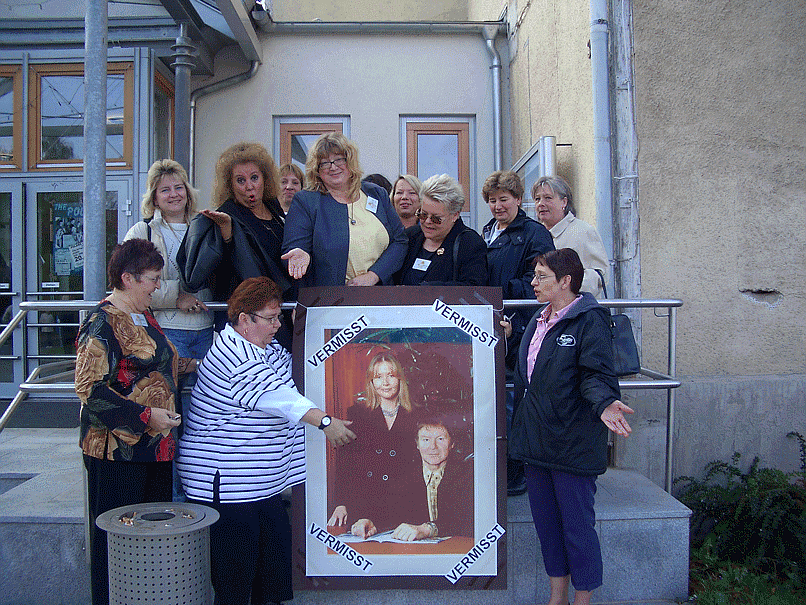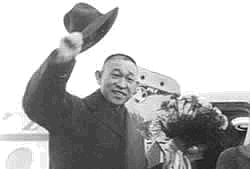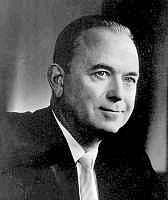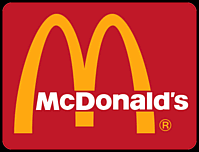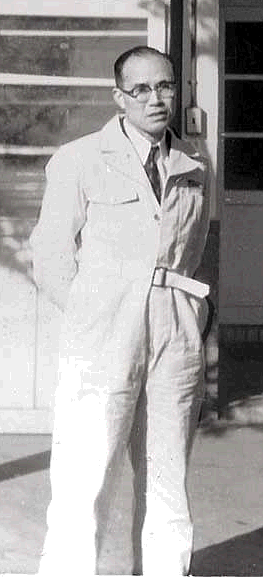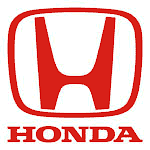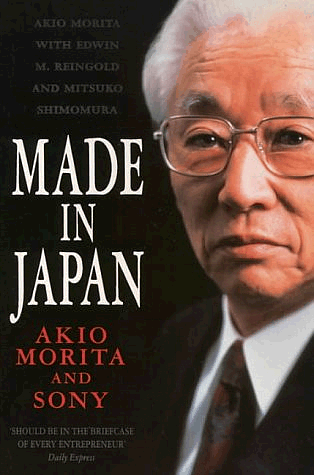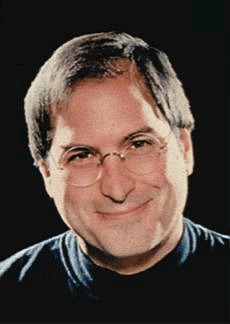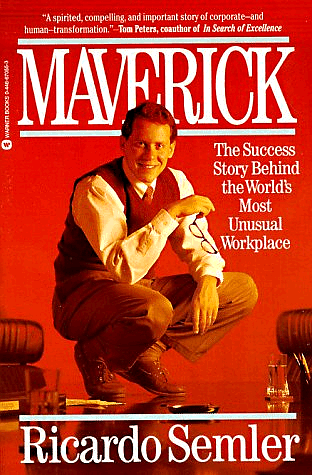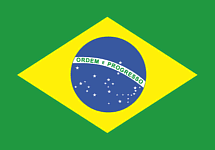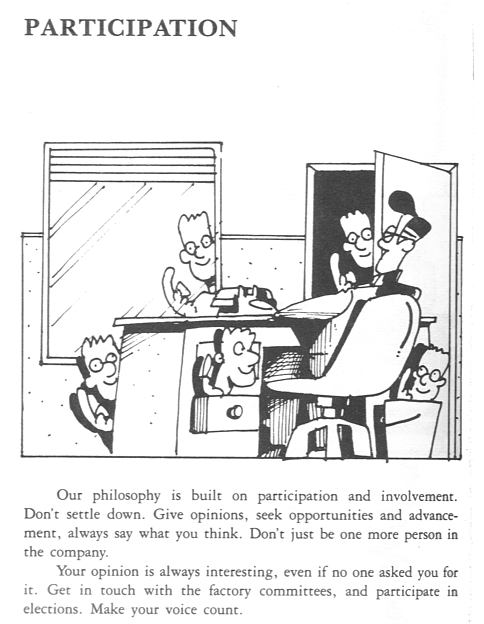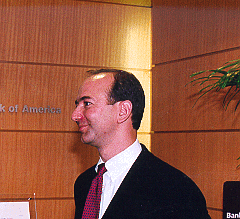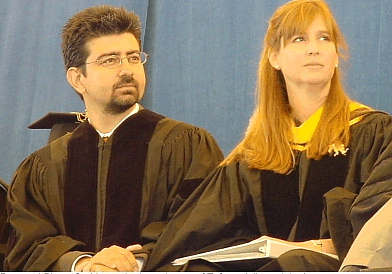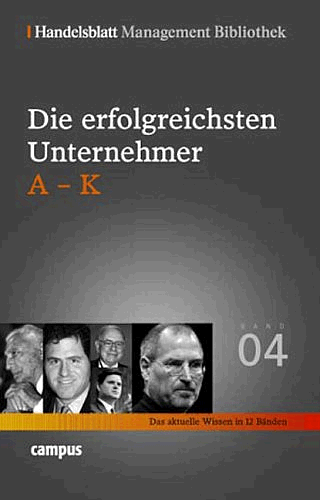| "Steven Paul Jobs (born February
24, 1955) is the CEO of
Apple Computer and a leading figure in the computer industry. As co-founder (with Steve
Wozniak) of Apple in 1976, he helped popularize the concept of the home computer
with the Apple II. Later, he was one of the first to see the
commercial potential of the
GUI and
mouse developed at
Xerox's Palo Alto Research
Center, and saw that these technologies were incorporated into the
Apple Macintosh. Today as the CEO of Apple, Steve Jobs is known to be the man
behind the recovery of Apple Computer, especially through an idea he
pushed for, the iPod. Jobs is also chairman and CEO of
Pixar Animation Studios, a leading producer of computer-animated feature films.
He owes much of his later success to three men, namely former CEO of
Apple, Gil Amelio, who managed to put Apple back on liquidity, John
Lasseter, the man behind Pixar, who created the Toy Story saga, which
contributed greatly to Jobs' later success, providing him with ample
financial sources and Tony
Fadell, the creator of the iPods.
Early years
Born to an
American mother, Joanne Simpson, and a Syrian father, Abdulfattah ("John")
Jandali, a political science professor, in
Green Bay, Wisconsin, Steven Paul was put up for adoption since an unmarried
couple having a child was unaccepted in society at the time. Steven
Paul was adopted soon after birth as a "John Doe" Baby by Paul and
Clara Jobs of
Mountain View, Santa Clara County, California. Paul and Clara Jobs gave him the
name Steven Paul Jobs. His biological parents later married and gave
birth to Jobs' biological sister the novelist
Mona Simpson, who is married to Richard Appel. The marriage of his biological
parents ended in divorce years later. To this day, Jobs dislikes
Paul and Clara Jobs being called his adopted parents, and prefers to
simply refer to them as his "parents."
In 1972, Jobs graduated from
Homestead High School in
Cupertino, California and enrolled in Reed
College in
Portland, Oregon, but he dropped out after one semester. Years later, when
speaking at a
Stanford University graduation ceremony in 2005, Jobs said he remained at Reed
attending classes, including one in
calligraphy. "If I had never dropped in on that single course in college, the
Mac would have never had multiple typefaces or proportionally spaced
fonts," he said.
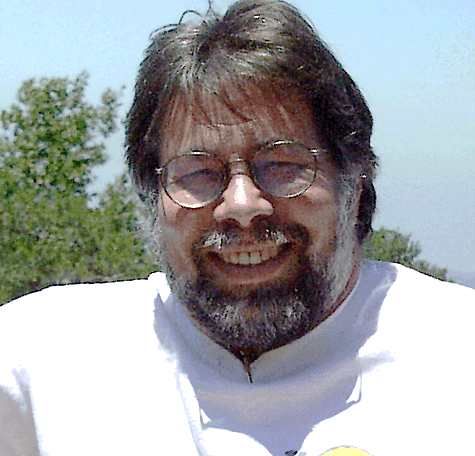
Abb.: Steve Wozniak (1950 - ) [Bildquelle. Wikipedia]
In the autumn of 1974, Jobs returned to California and began
attending meetings of the "Homebrew Computer Club" with Steve
Wozniak. He took a job at Atari, a manufacturer of popular
video games, as a technician. During this time, it was discovered that a
slightly modified toy whistle included in every box of Cap'n
Crunch
breakfast cereal was able to reproduce the
2600 Hz supervision tone used by the AT&T long
distance telephone system. Jobs and Wozniak went into business briefly in 1974
to build "blue boxes" based on the idea that allowed for free long
distance calls.
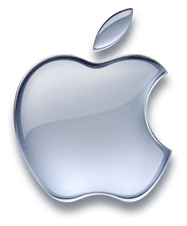
Abb.: Firmenlogo®
In 1976, Jobs, then 21, and Wozniak, 26, founded
Apple Computer Co. in the Jobs family garage. The first personal computer Jobs
and Wozniak introduced was called the Apple I. It sold for $666.66,
in reference to the phone number of Wozniak's Dial-A-Joke machine,
which ended in -6666.
In 1977, Jobs and Wozniak introduced the Apple II, which became a
huge success in the home market and made Apple an important player
in the nascent personal computer industry. In December 1980, Apple
Computer became a publicly traded corporation, and with the
successful IPO, Jobs' stature rose further. That same year, Apple
Computer released the Apple III, but it met with much less success.
As Apple continued to grow, the company began looking for
corporate management talent to help manage its expansion. In 1983,
Jobs lured John
Sculley, an executive with Pepsi-Cola, to serve as Apple's CEO, challenging him,
"Do you want to spend the rest of your life selling sugared water,
or do you want a chance to change the world?" That same year, Apple
also released the technologically advanced but commercially
unsuccessful Lisa.
1984 saw the introduction of the
Macintosh, the first commercially successful computer with a graphical user
interface. The development of the Mac was started by Jef Raskin, and
the team was inspired by technology that had been developed at Xerox PARC,
but not yet commercialized. The success of the
Macintosh led Apple to abandon the Apple II in favor of the Mac product line,
which continues to this day.
Departure from Apple, Creation of NeXTWhile Jobs was a
persuasive and charismatic evangelist for Apple, critics also
claimed he was an erratic and tempestuous manager. In 1985, after an
internal power struggle, Jobs was stripped of his duties by the
board of directors and resigned from Apple. Note that Jobs still
remained president of Apple Computer at that time.
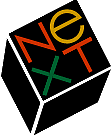
Abb.: Firmenlogo®
After leaving Apple, Jobs founded another computer company, NeXT
Computer. Like Lisa, NeXT was technologically advanced, but it never was able to
break into the mainstream because of its high cost. For those who
could afford it, it did, however, garner a strong following due to
its technical strengths, chief among them being its
object-oriented software development system. Jobs marketed NeXT
products toward the scientific and academic fields because of the
innovative, experimental new technologies it incorporated (such as
the Mach kernel and the DSP chip).
The NeXT Cube was Jobs' philosophical idea of an "interpersonal"
computer, which he believed was the next monumental step after
"personal" computing. That is, if computers could allow people to
communicate and collaborate together in an easy way, it would solve
a lot of the problems that "personal" computing had come up against.
Jobs had been criticized for not including built-in networking
features on the original Macintosh (calling it an "umbilical cord to
the company"), and he was determined not to make the same mistake
again. During a time when e-mail for most people was plain text,
Jobs loved to demo the NeXT's e-mail system,
NeXTMail, as an example of his "interpersonal" philosophy.
NeXTMail was one of the first to support universally visible,
clickable embedded graphics and audio within e-mail.
Jobs ran NeXT with an obsession for perfection at any cost. This
eye for detail ultimately destroyed NeXT's hardware division, but,
on the other hand, it also showed the world that Jobs could design a
Macintosh that was arguably better than the original. The NeXT
Cube's laser-cut magnesium case has popularly been cited as an
example of the quest for perfection-at-any-cost.
Just as Jobs railed against IBM at Apple, Jobs railed against Sun
Microsystems as an Evil Empire while at NeXT. Later, after NeXT's
hardware division was dropped, Jobs and Sun Microsystems' Scott
McNealy introduced
OPENSTEP together.
While Jobs' stint at NeXT is often glossed over in history books,
his contributions at NeXT would bring the world two monumental
events:
- The World-Wide Web.
Tim Berners-Lee developed the original
World Wide Web system at CERN on
a NeXT
workstation. Jobs' insistence that average people should be able to
write custom "mission-critical" applications formed the basis of
Interface Builder, which Berners-Lee utilized to do just that —
write a program entitled "World-Wide Web 1.0".
- The Return of Apple Computer. Apple's reliance on ancient
software and internal mismanagement had brought it near bankruptcy
throughout the early to mid 1990s. Jobs' progressive stance on UNIX
underpinnings were considered overly ambitious and somewhat backward
in the 1980's, but his choice ultimately became an expandable, solid
foundation for an operating system. Apple would later acquire this
software and, under Jobs' leadership, experience a renaissance.
NeXT's technologies also helped the advancement of technologies
such as
object-oriented programming,
Display PostScript, and
magneto-optical devices. Return to AppleIn 1996,
Apple bought NeXT
for $402 million, bringing Jobs back to the company he founded. In 1997 he
became Apple's interim CEO after the directors lost confidence in
and ousted then-CEO
Gil Amelio. Upon returning to the leadership of Apple, Jobs used
the title of "iCEO". In March of 1997 Jobs abruptly terminated a
number of projects such as
Newton,
Cyberdog, and
OpenDoc. In the coming months, many employees developed a fear
of encountering Jobs while riding in the elevator, "afraid that they
might not have a job when the doors opened. The reality was that
Steve's summary executions were rare, but a handful of victims is
enough to terrorize a whole company."
With the purchase of NeXT, much of the company's technology found
its way into Apple products, notably
NeXTSTEP, which evolved into Mac
OS X. Under Jobs' guidance the company increased sales
significantly with the introduction of the iMac.
Since then, appealing designs and powerful branding have worked well
for Apple.
In recent years, the company has branched out. With the
introduction of the iPod
portable music player,
iTunes digital music software, the
iTunes Music Store, the company is making forays into personal
electronics and online music. While stimulating innovation, Jobs
also reminds his employees that "real artists ship," by which he
means that delivering working products on time is as important as
innovation and killer design.
Jobs worked at Apple for several years with an annual salary of
$1, and this earned him a listing in
Guinness World Records as the "Lowest Paid Chief Executive
Officer". At the 2001 keynote speech of Macworld Expo in San
Francisco, the company dropped the "interim" from his title. His
current salary at Apple officially remains $1 per year, although he
has traditionally been the recipient of a number of lucrative "executive
gifts" from the board, including a
$90 million jet in
1999,
and just under 30 million shares of restricted stock in 2000-2002.
As such, Jobs is well compensated for his efforts at Apple despite
the nominal one-dollar salary.
Jobs is both admired and criticized for his consummate skills of
persuasion and salesmanship, which has been dubbed the "reality
distortion field" and is particularly evident during his
keynote speeches at
Macworld Expos. This "RDF" shield is an encapsulating term, also
referring to Apple's sometimes non-competitive market pricing, such
as the overly expensive G4 cube, or making decisions outside the
desire of market demands, such as the elimination of Macintosh
clones. Not all of his decisions have met with widespread approval;
Apple's marketing efforts in the 1980s, while excellent from a
technical standpoint, were alienating to corporate buyers, who
turned to IBM, resulting in a precipitous drop in market share.
Microsoft further diminished Apple's lead by later developing its
own GUI,
Microsoft Windows, which eventually eclipsed and dominated over
Apple's share. Pixar
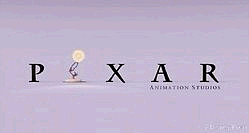
Abb.: Firmenlogo®
In 1986
Jobs and
Edwin Catmull co-founded
Pixar,
an
Emeryville, California
computer animation studio. It was formed around what was
originally
Lucasfilm's computer graphics division, which Jobs bought from
its founder,
George Lucas, for $10 million, one-third of the asking price.
Pixar became famous and successful nearly a decade later with the
breakthrough feature movie
Toy Story. It has since produced the award-winning films
A Bug's Life in
1998,
Toy Story 2 in
1999,
Monsters, Inc. in
2001,
Finding Nemo in
2003,
and
The Incredibles in
2004.
Jobs' share is now worth about a billion dollars. Their next release,
Cars, is due for a 2006
summer release.
Finding Nemo and The Incredibles have each received
the
Academy Award for Best Animated Feature.
Personal lifeJobs married Laurene Powell on
March 18,
1991
and has three children with her. He also has a daughter, Lisa
Brennan-Jobs, by Chris Brennan, a woman he did not marry.
In "The Second Coming of Steve Jobs" author Alan Deutschman
reports that Jobs once dated
Joan Baez. Deutschman quotes Elizabeth Holmes, a friend of Jobs
from his time at Reed College, as saying she "believed that Steve
became the lover of Joan Baez in large measure because Baez had been
the lover of (Bob) Dylan."
In
iCon Steve Jobs by Jeffrey S. Young & William L. Simon, the
authors suggest that Jobs might have married Baez if not for the
fact that her age at the time (41) could have cancelled out the
possibility of having children.
Jobs is a
pescetarian (not a
vegetarian or
vegan
as is often claimed) — although he does not eat meat, he reportedly
eats fish from time to time.
In 1982,
Jobs bought an apartment in
the San Remo, where Princess
Yasmin Aga Khan, daughter of
Rita Hayworth, also had an apartment. It was a New York
apartment building with a politically progressive reputation. With
the help of
I.M. Pei, Jobs spent years renovating his apartment in the top
two floors of the building's north tower, only to sell it almost two
decades later to U2 frontman Bono.
Jobs had never moved in.
In 1984
Jobs purchased a 17,000 square foot, 14 bedroom, Spanish Colonial
mansion, designed by
George Washington Smith in
Woodside, California. Although Jobs lived in the mansion for ten
years, reportedly in an almost unfurnished state, and let
Bill Clinton use it in 1998
while his daughter was studying nearby, the mansion was allowed to
fall into a state of disrepair. Planning to demolish the house and
build a smaller home on the property, he met complaints from local
preservationists over his plans. In June 2004,
the Woodside Town Council gave Jobs approval to demolish the mansion,
on the condition that he advertise the property for a year to see if
someone would move it to another location and restore it. A number
of people showed interest, including attorney Richard Pivnicka, who
has experience restoring old property.
On
July 31,
2004
Jobs underwent surgery to remove a cancerous tumor
in his
pancreas. He had a very rare form of
pancreatic cancer, called an islet cell neuroendocrine tumor,
which did not require
chemotherapy or
radiation therapy. During his absence, Tim Cook, head of
worldwide sales and operations at Apple, ran the company.
In 2005,
Steve Jobs banned all books published by
Wiley from Apple retail stores in response to their publishing
an unauthorized biography,
iCon Steve Jobs by Jeffrey Young and William L. Simon. ControversyThe aggressive and demanding personality of Steve Jobs has been
much talked and written about, with a number of unauthorized
biographies,
The Little Kingdom by
Michael Moritz,
Steve Jobs: The Journey Is the Reward by
Jeffrey S. Young,
The Second Coming of Steve Jobs by
Alan Deutschman and
iCon Steve Jobs by Jeffrey S. Young &
William L. Simon.
In the documentary
Triumph of the Nerds, Jobs' famous firing from Apple Computer by
CEO John Sculley and the Apple Board of Directors was talked about
by various people:
-
Chris Espinosa: "The grandiose plans of what Macintosh
was gonna be was just so far out of whack with the truth of what
the product was doing. And the truth of what the product was
doing was not horrible, it was salvagable. But the gap between
the two was just so unthinkable that somebody had to do
something, and that somebody was John Sculley."
-
John Sculley: "The board had to make a choice and I said
look, it's Steve's company, I was brought in here to help. If
you want him to run it, that's fine by me. But we gotta at least
decide what we're gonna do and everybody's got to get behind it
... and ultimately after the board talked with Steve and talked
with me, the decision was that we would go forward with my plans
and Steve left."
- Steve Jobs: "What can I say? I hired the wrong guy. He
destroyed everything I spent 10 years working for; starting with
me, but that wasn't the saddest part. I would have gladly left
Apple if Apple would have turned out like I wanted it to."
-
Larry Tesler: "People in the company had very mixed
feelings about it, everyone had been terrorized by Steve Jobs at
some point or another, and so there was a certain relief that
the terrorist would be gone. And on the other hand I think there
was incredible respect for Steve Jobs by the very same people,
and we were all very worried what would happen to this company
without the visionary, without the founder, without the charisma."
-
Andy Hertzfeld: "He took it as a personal attack, started
attacking Sculley, in which, you know, backed himself into a
corner. Because he was sure that the board would support him and
not Sculley ... Apple never recovered from losing Steve; Steve
was the heart and soul and driving force; it would be quite a
different place today; they lost their soul."
Quotes
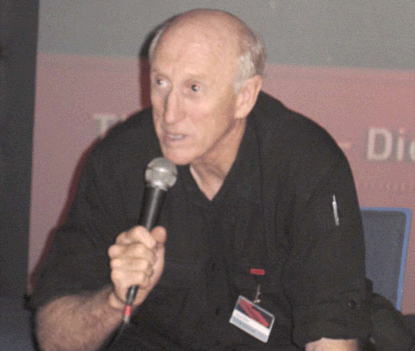
Abb.: Steward Brand (1938 - ) [Bildquelle: Wikipedia]
"When I was young, there was an amazing publication called The
Whole Earth Catalog, which was one of the bibles of my
generation. It was created by a fellow named
Stewart Brand not far from here in Menlo Park, and he brought it
to life with his poetic touch. This was in the late 1960's, before
personal computers and desktop publishing, so it was all made with
typewriters, scissors, and polaroid cameras. It was sort of like
Google in paperback form, 35 years before Google came along: it was
idealistic, and overflowing with neat tools and great notions."
Steve Jobs' June 12, 2005 Commencement Address,
Stanford University (in the June 14, 2005 edition of the online
"Stanford Report" ).
[Quelle:
http://en.wikipedia.org/wiki/Steve_jobs. -- Zugriff am
2005-10-16] |
